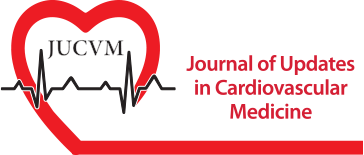Dear Editor,
I have read with great interest, the manuscript by Said(1) in which he thoroughly reviewed the current surgical techniques in the management of pediatric hypertrophic obstructive cardiomyopathy (HOCM). Despite the fact that there are well-established different techniques for the management of left ventricle obstruction in HOCM, it remains controversial when right ventricle (RV) is also affected by the disease. Fortunately, RV involvement in HOCM is quite uncommon and primarily associated with genetic disorders such as Noonan syndrome and other RASopathies. The author effectively demonstrated his own technique for patients with HOCM and right ventricular outflow tract (RVOT) obstruction, which includes infundibular incision, limited RV myectomy, and patch augmentation of the incision. He also noted that because of the septal connection of the tricuspid valve on the right side, conduction tissue and tricuspid valve apparatus are both at risk for iatrogenic injury, which may complicate the procedure. I have a few comments and remarks.
First, it was observed that 28-44% of patients with HOCM display varying degrees of RV pathology(2). The proposed mechanisms include the disease process primarily affecting RV cardiomyocytes, resulting in RV hypertrophy, RV dysfunction secondary to postcapillary pulmonary hypertension, and RV failure related to altered ventricular inter-dependence(2, 3). Regardless of the underlying etiology, patients with RV involvement exhibit a dismal prognosis, characterized by an elevated risk of ventricular tachycardia and sudden cardiac death. Consequently, tailored therapy approaches are necessary based on the underlying pathophysiological mechanisms. Given that RV hypertrophy is predominantly present in all the aforementioned situations, could the author explain how the author distinguished which patients may benefit from limited RV myectomy?
Second, the author noted that he preferred patch augmentation of the RV incision after the myectomy. I am concerned about using the patch to enlarge the RVOT in patients with HOCM, as it would compromise the RV function and further abolish ventricular inter-dependence(4). Others proposed that the adequate resection of hypertrophied tissue resulted in elimination of obstruction, an increase in the RV cavity size, and improvement in RV function without patch augmentation(5).
Second, the author indicated a preference for patch augmentation of the RV incision following the myectomy. I am apprehensive about employing the patch to augment the RVOT in individuals with HOCM, as it might jeopardize RV function and further disrupt ventricular interdependence. Some suggested that sufficient excision of hypertrophied tissue leads to the removal of obstruction, an enlargement of the RV cavity, and enhancement of RV performance without the need for patch augmentation. Do you have any complications that are associated with this?
Third, I would like to know when he offers transplantation for a pediatric patient with severe biventricular obstructions in the form of HOCM.



